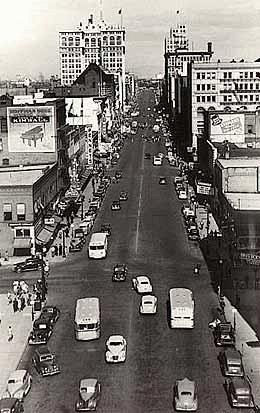On August 31, 1936, the last electric trolley car rolls through the streets of Spokane in a grand parade from downtown to Natatorium Park. About 10,000 spectators line the streets to watch "faithful old car No. 202," bedecked with funeral crepe, rattle its way to its death. The old trolley is solemnly set ablaze, burning so fiercely that it reddens the sky above the city. The city had just finished taking the "modern step" of converting its entire transit system to buses, thus ending almost five decades of trolley service.
A Wake and a New Beginning
The Spokesman-Review reported a "gay crowd of Gibson girls and derby-hatted Beau Brummels blowing horns and throwing confetti" for the parade. It was simultaneously a celebration of the city's new modern buses and a nostalgic wake for the beloved streetcars, which had rumbled through Spokane since 1888. The newspaper reported that the last trolley car, which had logged 1.6 million miles, was accompanied on its death march by "solemn-faced pallbearers."
At the Natatorium Park turnaround, bales of hay were piled inside the car. The old trolley was solemnly set alight, burning so fiercely that it reddened the sky above the city.
"Six pretty girls in bathing suits and firemen's red hats sprang into action with the three leads of fire hose, two on a nozzle, and poured on the water that extinguished the flames," wrote a reporter. "Souvenir hunters tore into the car, rending it apart" (Spokesman-Review, "Thousands See Trolley Blaze").
The parade included a fleet of new buses, which had by this time taken over all the old trolley routes. The buses were considered by many to be an improvement over the clanging old trolleys. Yet when that old trolley rolled by for the last time, the Spokesman-Review reported the mood of the crowd as "downcast."

